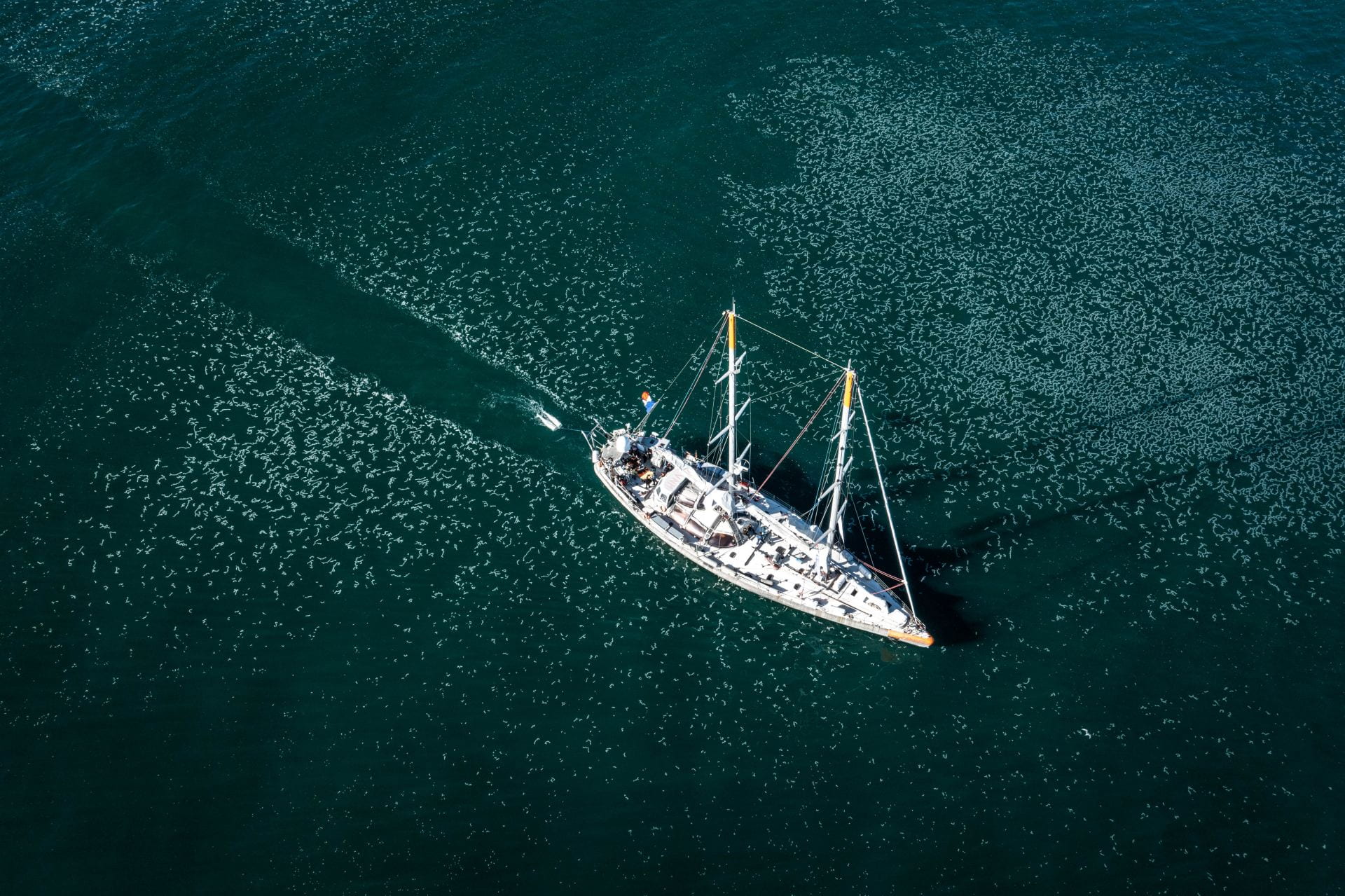
The new study showed viruses in plankton could play a role in mitigating the effects of climate change. Credit: Courtesy of Tara Ocean Foundation
Researchers at Ohio State found that a new way to mitigate climate change may come from observing viruses in an unlikely sea creature — plankton.
The study, published June 9 in Science, states plankton with certain viruses can steer carbon dioxide from the atmosphere to permanent storage at the bottom of the ocean floor. Researchers can find which specific viruses induce this process to reduce carbon pollution in the ocean, the study stated.
Matthew Sullivan, a professor of microbiology at Ohio State and senior author of the study, said carbon emissions can pollute seawater after it enters the atmosphere, and plankton can play a key role in the fate of those emissions.
“Some of the plankton are the ones that really determine what happens to that carbon dioxide,” Sullivan said.
Carbon emissions in the atmosphere come in large part from human activity, according to a study from NASA. More than 90 percent of carbon emissions go into the ocean. Sullivan said carbon makes the ocean water more acidic, endangering sea life.
According to the study’s findings, plankton with certain viruses absorb carbon dioxide and take it with them when they sink to the bottom of the ocean floor. Sullivan said this process creates a “biological pump,” which works to remove carbon from the ocean’s surface and can reduce climate change even after carbon enters the ocean.
According to the University of Rochester, once organic compounds sink to the ocean floor, they decompose and release the carbon into the water, which rises to the surface. The deeper the particle sinks, the longer it takes for the carbon to return to the atmosphere, which reduces climate change. The pump puts away at most 12 gigatonnes of carbon each year, and the study shows that the right virus can increase this process.
Sullivan said the study’s goal was to find the viruses that induce this process to create models to learn how biological pumping occurs. Researchers observed plankton with several viruses, observing which ones caused the pump to form.
Researchers have since narrowed down 11 viruses that might encourage this process, Sullivan said.
Ahmed Zayed, a research scientist at Ohio State and co-author of the study, said after discovering the right viruses, researchers will then create models on how this process occurs and can be induced.
“We were surprised to find that they are predicting the changes in carbon exports to the host,” Zayed said. “That helps a lot with building the models.”
The next step for researchers is to refine the models to better predict how different viruses will make plankton act in the future, Zayed said.
Despite the study’s findings, Sullivan said the best way to reduce pollution and climate change is to reduce human activity that releases carbon emissions, such as driving cars and industrial production.
“The most important thing we can do is just reduce production of CO2,” Sullivan said. “There’s no question that the most powerful thing we have is for humans to minimize CO2 in the atmosphere.”
Beginning the study of these viruses over eight years ago, Sullivan said it is important that scientists continue studying plankton and other deep sea organisms.
Zayed said studying processes like this can not only help scientists observe what is occurring in the ocean but can help solve problems affecting the entire world.
“There are so many things that we can understand and we are able to take advantage of in order to preserve our planet,” Zayed said. “I think that’s something that would drastically change the course of the planet.”


